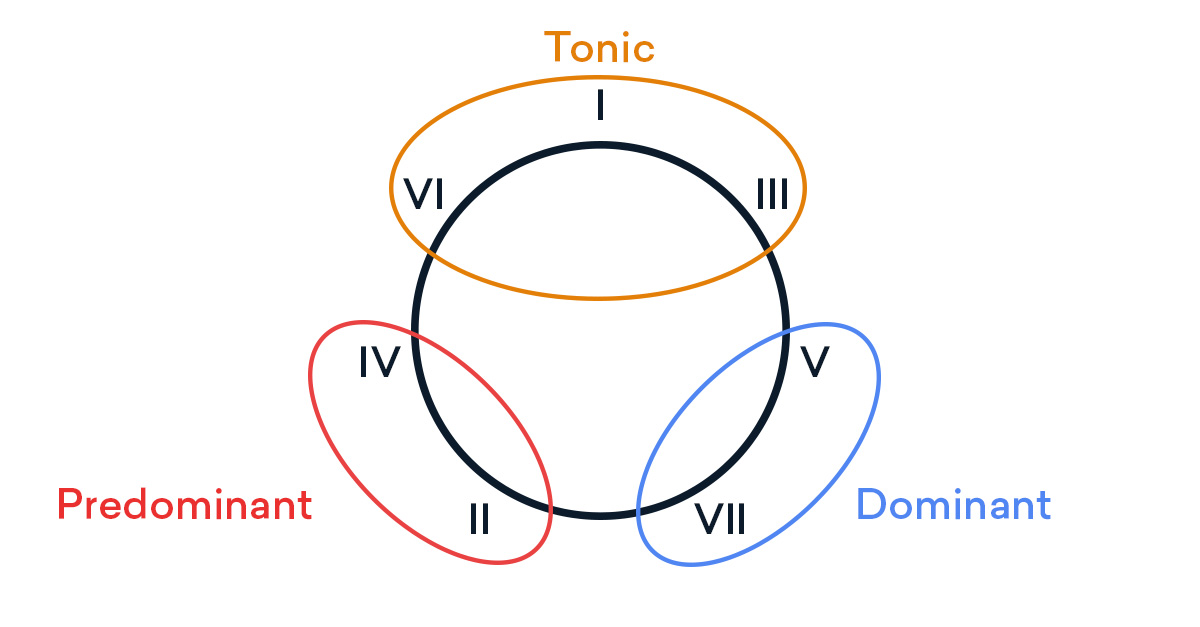Harmony in music is one of the most necessary parts of a track. However, it may be extremely hard to get right.
You do not need to know each and everything in music to be creative. However, there are a few parts of a track which are required knowledge for unlocking your songwriting talent—harmony is one of them.
Whether you are a seasoned music-maker or completely new to it, learning music theory has massive creative advantages.
So today, I will jump into what harmony in music actually is. You will learn what harmonies are, identify them and write good harmony in your own music to get more audience.
What’s harmony in music?
Harmony happens any time two or more differently pitched notes are played at the same time. The concept of harmony in music theory usually refers to building chords, chord qualities, and chord progressions.
Harmony could refer to the arrangement of the individual pitches in a chord as well as the overall chord structure of a bit of music.
Harmony strictly applies to pitched instruments, so clapping and stomping at the same time will not make a harmony.
You may associate harmonies with vocals, however, they could be produced on all multi-pitched instruments–guitars, pianos, synths–or a mix of single-pitched instruments playing different notes at the same time, like two people singing together.
From chart-topping R&B songs to folky acoustic tracks to orchestral works, harmony is a central element of just about everything.
Building music through solid and engaging harmonies is an important skill for anybody who desires to create music.
Functional harmony
Harmony is a deep topic. However, you could begin getting familiar with it by learning a bit of music theory.
Harmony in music is represented by roman numerals.
All you must do is replace a chord’s name with the roman numeral that corresponds to the scale degree of its root.
It sounds easy however roman numerals are incredibly helpful. They tell you what harmonic category a chord belongs to.
Chord categories tell you the feature of a chord in a piece of music.
In tonal music, there are 3 useful categories: tonic, predominant and dominant.
The tonic chords are resting places where the harmonic action of a track feels the most stable.
Dominant chords are the next most necessary. You may think of them type of like the opposite of tonic chords.
Dominant chords come from the triad built on the fifth degree of the scale.
A dominant Seventh chord contains scale degrees four and seven, which are the two semitone intervals present in the major scale.
When you listen closely to the dominant Seventh chord, you could hear how the 4th and 7th scale degrees within it naturally want to move down (4th-3rd) and up (7th-tonic) to resolve to the tonic chord.
This pleasing tension between the tonic and the dominant is the basis for harmonic progressions in music.
So if I and V are like the harmonic North and South poles than what about the rest?
The other chords in your harmonic vocabulary are predominant chords which are used to bridge the gap between I and V.
Harmonic Analysis
You could see these relationships in action when you write the roman numerals underneath the chords of your favorite songs.
Writing the roman numerals instead of the chord names is called harmonic analysis. It shows you the underlying structure of a track so you could understand the way it works.
In this instance, I’ve written out the chord progression to a Beatles song first with the chord names, then with roman numerals and then with the chord categories.
This way you could easily see the smooth progression from tonic to predominant to dominant and back again—that’s useful harmony!
Try utilizing harmonic analysis to know your favorite songs. Once you could see the harmonic outline of a whole track, you will find out how you could put your own spin on it.
How to harmonize a melody
Beginning with chords and Roman numerals is a good way to get writing songs fast—especially when you are composing on a chordal instrument like a keyboard or guitar.
However, when you are just looking to add harmonizing notes to a melody you may already have your chords figured out.
So how do you get began harmonizing a melody?
Once you add a harmony note above or below your main melody it needs to “agree” with the chord underneath it.
Meaning it couldn’t be a dissonant tone far outside the scale.
Identify the underlying chord’s role with roman numerals then find its key signature to see which notes you could use to harmonize with your melody.
The chord tones (scale degrees 1, 3, 5 and 7) of the underlying chord will usually be the best choice. Those are the most powerful and stable places to land.
Counterpoint
As your harmony grows you will be creating another melody line on top of the original. That is the heart of a musical discipline called counterpoint.
The vast majority of pop songs will not include sophisticated counterpoint.
However, the core idea that each line of harmony needs to make sense on its own rings true for everybody who writes music.
Lines in a harmonized melody could flow in 4 different sorts of motion:
- Parallel motion is when two voices move while keeping the same interval relationship
- Similar motion is when two voices move according to the same melodic contour.
- Oblique motion is where one voice moves while the other stays in place
- Contrary motion is when two voices move in opposite directions.
Attempt to keep away from creating blocky voicings that only move in parallel.
Instead, see if your harmony line can use a mix of the different types of motion to go from chord to chord.
Perfect harmony
Harmony is an absolutely essential part of a musical composition. However, it does not have to be scary.
Get began with harmony by writing roman numerals, analyzing songs you like, and weaving multiple melodies together in your songs—you’ll be composing like a pro in no time.




